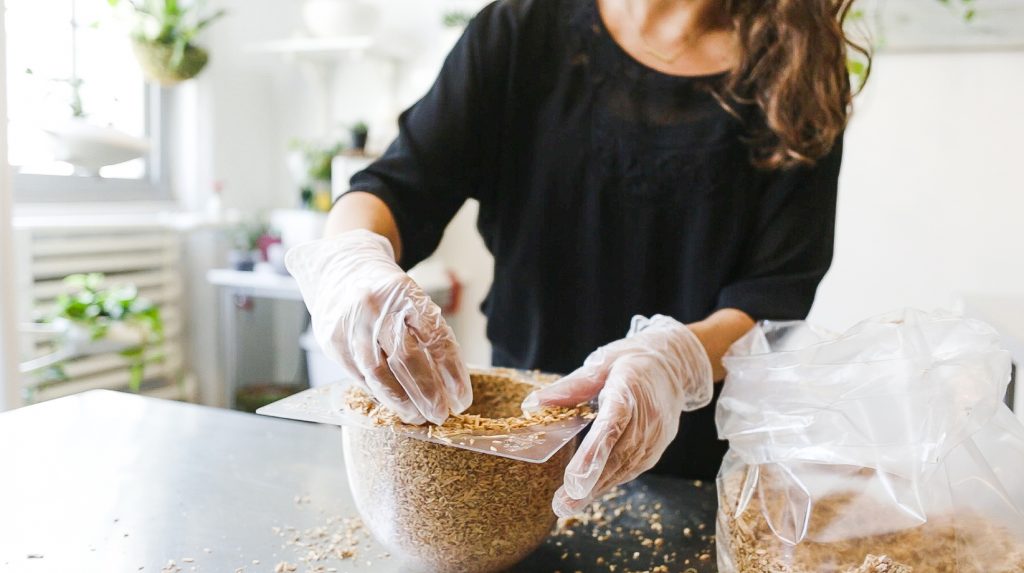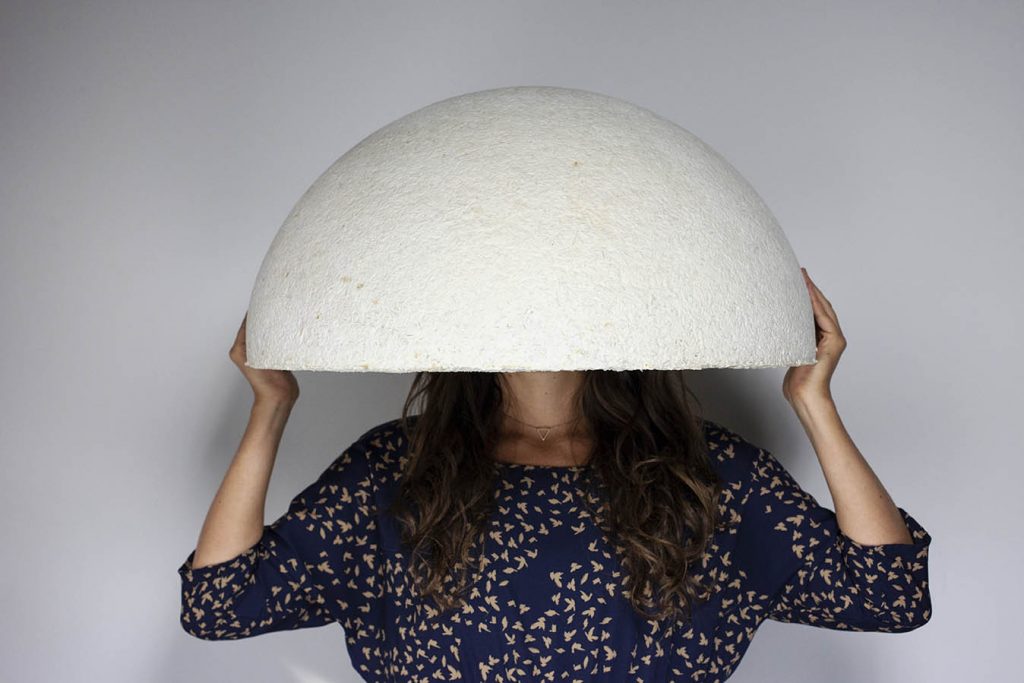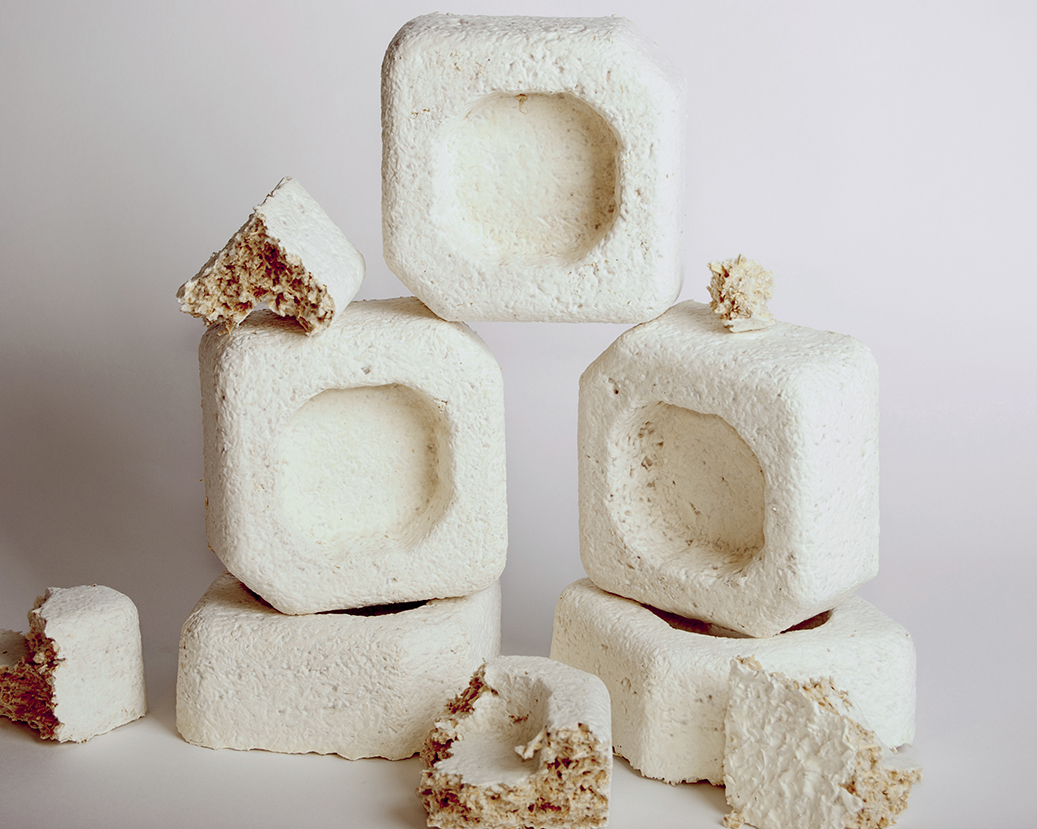What if your ski boot liners were made from the same material as your lunch? Your light fixture, a byproduct of sustainable agriculture? The packaging in your delivery box, all plastic free and compostable? The connecting thread and origin of these products? Mushrooms.
Mycelium, the root structure of mushrooms, is quickly being unearthed as a top biomaterial and change-maker in a revolution of circular life cycles. In an era of convenience, single-use plastics and linear “take, make and use” economic models, scientists and designers are pioneering another option: Grow materials compatible with Earth. These materials replace plastics, naturally biodegrade and can be tailored for endless applications, all depending on what they eat. To grow mushroom mycelium, you have to feed it.
Danielle Trofe, a Brooklyn-based biodesigner, feeds her mushroom mycelium hemp. Through the combination of two organic materials, she creates biofabricated lighting that’s not only beautiful but sustainable.

“It’s really about creating this connection — a deeper understanding of how things are made, what they’re made from and where they are going to end up — that really changes and shifts our value system,” she says.
Trofe’s designs, ranging from large installations to individual DIY kits, aim to remove the lab coat of science and reinstate awe in the natural world. When creating your own DIY mycelium grow lamp, you’re involved in every step of the fabrication process, linking you directly to the life cycle of your product and invoking a question: Where does all this stuff go when you’re done with it?
In the U.S. specifically, just 9 percent of plastic waste is recycled. Forty percent of that plastic is packaging and is only used once. So, it’s not just the product itself whose life cycle matters; the packaging it comes in has to be considered, too.
Ecovative, a New York-based biotech company, develops mycelium to solve this problem. Its MycoComposite combines mycelium with hemp to create commercial, custom-molded mushroom packaging. It’s biodegradable, hydrophobic, heat resistant and grows in just nine days. When composted, it breaks down within months. You can order a GIY, or Grow-It-Yourself, kit and create your own custom molds. The twist? If you feed mycelium a different meal, its properties change.
Grace Knight, an Ecovative industrial designer, feeds mushrooms for a living. She also innovates one-of-a-kind materials that are helping change the fashion, beauty and food marketplaces.
“People are hungry for it,” she says, when discussing the commercial opportunities of mycelium.

MycroFlex, a mycelium foam, can replace everything from disposable makeup applicators to midsoles of tennis shoes. Atlast™, a cell- or plant-based meat alternative, creates a structure for whole cuts of meat. It’s not science fiction. It’s simply science, and Ecovative’s mission is to get this technology into the hands of everyone.
“We are giving agency to people. That’s where change happens, at the grassroots level, independently in people’s homes. It’s not a top-down approach,” Knight says. While Ecovative has patents on their mycelium knowledge, they also operate GROW.bio, an open forum for mycelium artists and anyone interested in mycelium fabrication.
It sounds simple, right? Grow your own answers — answers to plastic pollution, industrial agriculture and linear life cycles.
“You can’t build economic models of infinite growth with finite resources,” Trofe says. “The more that we can communicate how finite nature is and how delicate the planet systems are the more we can create awareness. Then we can actually change how we participate.”
Out of the lab and in your backyard, mycelium creates a superhighway of connectivity between plants, much like an underground internet. This open forum of information is vital to the development of its ecosystem. Although innovations in mycelium are making great strides to combat environmental issues, its inherent property to communicate may be its most profound. Nature is talking, we just have to listen.
XX Meg Callahan. Photos courtesy of Ecovative, Dan Arbery & Danielle Trofe.
This story first appeared in RANGE Magazine Issue 11: Origins. Buy your copy HERE or find a stockist near you.
